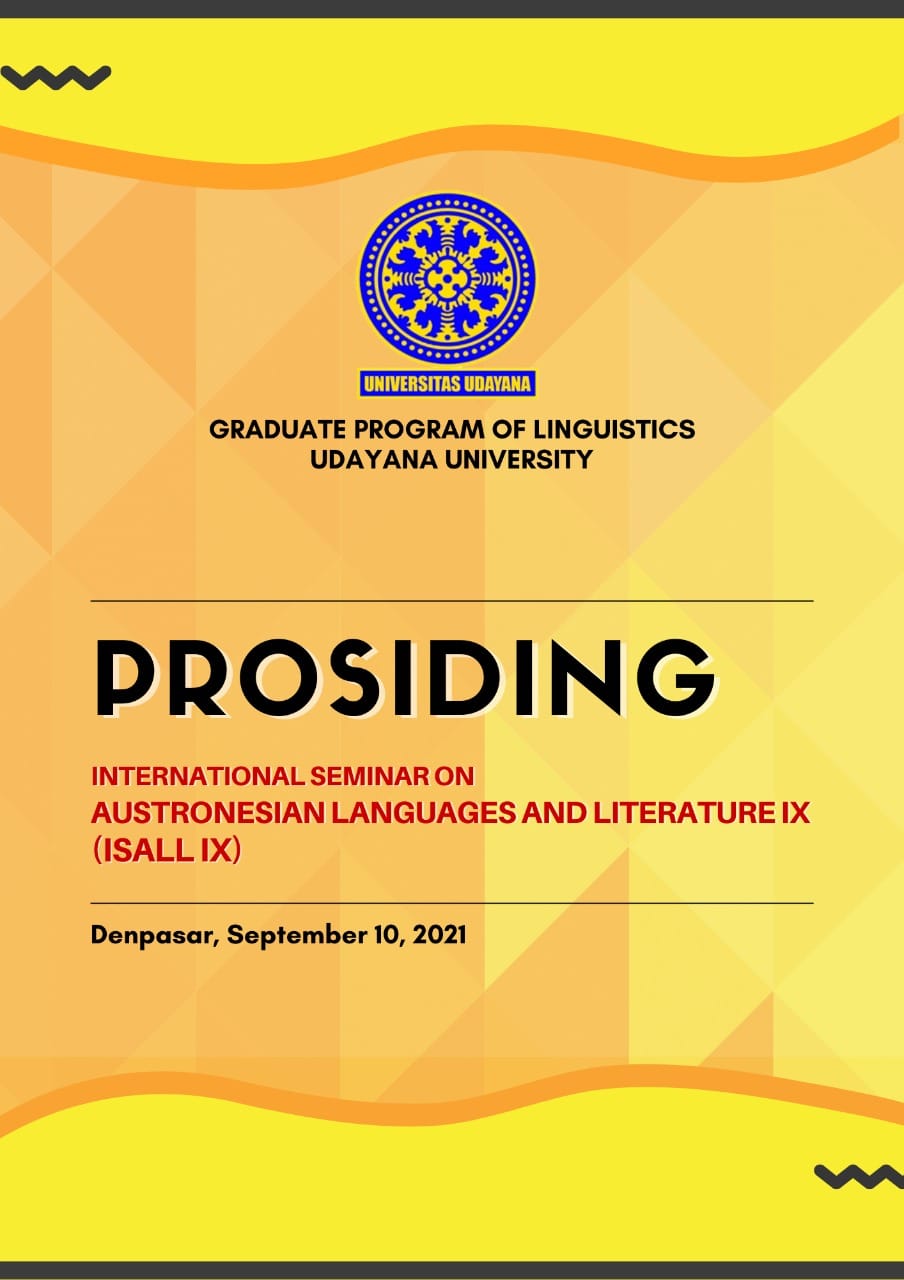Partikel wea dan kai dalam Bahasa Bima
Abstract
This article is trying to unwrapt the particle wea and kai in Bima Language, hence, to explain their morphological process in deriving particular constructions (applicatives), the types of applicatives they can make, and valency change mechanism of the verbs from non applicatives into the applicatives. Data in this article were collected from the natural utterances produced by the speakers of Bima Language. These data, were then elicited in order to get the valid data needed. The results of the analysis reveals that wea and kai are used to derive applicative verbs from nonaplicative ones, both the transitives and intransitives. Particle wea can be used to derive benefactive applicatives, meanwhile, particke kai can be used to derive instrumental, and patien applicatives. This causes the change in the syntactical properties of nonapplicative arguments from periphery (-term) of the nonapplicatives into the nucleus (+term) of the applicatives. In other words, the arguments of applicatives increase in numbers (valency increasing) which eventually changes the oblique relation into the object (oblique to term)
References
Artawa, K. (2004). Balinese Language: A Typological Description. Denpasar: CV Bali Media Adikarsa.
Halim, A. (1976). Politik Bahasa Nasional. Jakarta: Lembaga Bahasa Nasional, Departemen Pendidikan dan Kebudayaan.
Haspelmath, M. (2002). Understanding Morphology. London: Arnold.
Muhadjir, N. (1996). Metodologi Penelitian Kualitatif (edisi III). Yogyakarta: Rake Sarasih.
Palmer, F.P. (1994). Gramatical Roles and Relations. Great Britian: Cambridge University Press.
Samarin, W.J. (1967). Field Linguistics. A Guide to Linguistic Field Works. New York: Holt Rinehart and Winston, Inc.
Sudaryanto. (1993). Metode dan Aneka Teknik Analisis Bahasa. Yogyakarta: Duta Wacana Press.
Syamsuddin. (1996). “Kelompok Bahasa Bima-Sumba. Kajian Linguistik Historis Komparatif” (Desertasi): Bandung: Universitas Padjadjaran.
Vredenbergh, J. (1978). Metode dan Teknik Penelitian Masyarakat. Jakarta: Gramedia.
Wouk, F., & Arafiq. (2016). “The Particle kai in Bimanese”. Oceanic Linguistics (2), 319-349. Retrieved September 7, 2021, from http://www.jstor.org/stable/26408419


